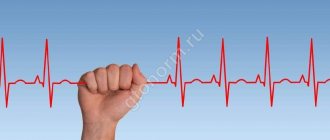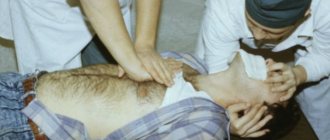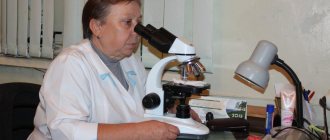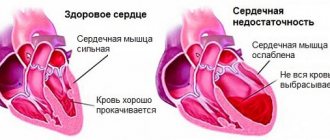Running is one of the most accessible types of physical activity, with certain training results. Even if you don’t set any exact sports goals for yourself, you are still developing some function of your body: improving your overall health, recovering from difficult competitions or workouts that happened yesterday or the day before, increasing the body’s endurance and burning fat, expanding aerobic capacity of the body, you increase the ability to run at such a speed that you previously did not run at all or could only run a very short distance. Each of the goals is achieved with the help of a certain load, well, where there is a load, there will be a heart rate, which in a running environment is usually measured in units of “beats per minute”.
Running heart rate is a very good and objective indicator (because it is expressed in numbers) of the load on your body - the higher the heart rate, the higher the load, the more energy the body uses, but also the faster you can run. Here a close analogy with the movement of a car suggests itself - the more you press on the gas, the more fuel enters the engine, the more power is generated when it is burned and the faster the car goes.
If you are an athlete actively involved in sports, or if you are an amateur who regularly participates in competitions, then we have special discount cards for you that allow you to receive significant discounts on the equipment, shoes or clothing you need.
However, it should be noted that this analogy has an even deeper meaning: with different fuel supplies, with different engine power output, different things happen - then, when you just start the car and move away, the car barely picks up speed, then it switches in second gear you accelerate even faster, after switching to third speed you can already overtake slower fellow travelers, in fourth gear, at speeds above average, you have access to cruising speed on the highway, well, fifth or sixth speed is for when you either need to get from point A to point B very quickly, or there is no speed limit on the highway.
It is impossible to reach a speed of 100 km/h at first speed, just as starting from a traffic light at “fourth” is very bad for the car’s engine. Each switch has its own job. Each “speed” is for a specific application.
The situation is exactly the same with the heart pulse. First, you warm up and run very slowly - the heart rate value in this case will be barely distinguishable from the resting state. Further, you increase the speed, and the pulse also begins to gradually increase. After this, you return to your usual speed, and your heart rate also reaches a higher value. But, here you decide to add more, for example, you want to overtake some slower runner in the race or you want to improve your final time that you achieved last time. Even greater speed means even greater heart rate, now you are just a bird flying low over the asphalt or trail track at this moment. The speed is pleasant for you, everything comes easy, no heavy sensations. However, you decided that it would be good to accelerate more and added more power to your “engine” - the speed increased to the maximum and you cannot run faster purely physically. The pulse is at its highest value and it seems that a little more and your heart will jump out of your chest. That’s it, the limit is your physical capabilities, your “machine” cannot “go” faster in any way - the pulse is at the maximum, your legs are not running, your eyes are dark.
An important conclusion that can be drawn from the idea that at a certain speed you can get a certain result is that at a certain heart rate (more precisely, in a certain range), it is also possible to achieve a strictly defined training result. That is, if you need to lose excess weight, then you need to run in the heart rate zone in which fat is burned. You need to train your endurance, pump up your cardiovascular system - you run in a different zone. If you want your body muscles to become stronger, you also run in a certain zone.
Why do all people have different “pulse zones”?
The fact is that people are all different - one weighs 70 kg, another weighs 90, one is a beginner, the other is a master of sports in athletics and is among the top ten best results at the Moscow Marathon, one runner has just started train and his cardiovascular condition is far from ideal, and the other has been training for 15 years and has already run 20 marathons. In total, there are several main factors that influence the pulse value:
Body mass.
People who are overweight “get” a high percentage of body fat and have high heart rate values compared to those who have a lower percentage of fat. Fat is ballast that the body needs to transport over a distance; the more of it, the more the muscles have to “work”, the more the heart has to pump blood to feed them, and the higher the pulse.
Level of training.
The higher the fitness, the greater the body’s ability, through the cardiovascular system, to absorb oxygen dissolved in the blood, pumped by the heart from the lungs to the muscles. Higher fitness means the heart needs less effort, pulse is lower, lower fitness means the pulse value is higher.
Smoking and drinking alcohol.
Bad habits that affect the state of the cardiovascular system and increase the heart rate.
Air temperature.
When it’s hot, the heart, in addition to delivering oxygenated blood to the muscles, also works to cool the body, essentially doing double duty. Double work = more effort = higher heart rate.
Painful condition. Before, during training, immediately after. Especially if you have recently had COVID-19.
Intense running reduces immunity, and then there is the disease with its viruses and bacteria, as well as medications. Naturally, the heart begins to work much more intensely in order to saturate the blood with the necessary elements to increase immunity, and if it is more intense, it means that the pulse value will definitely be far higher than the usual figures.
State of stress and tense emotional state.
Under stress, the nervous system works with great tension; the pulse in a state of physical rest can go off scale beyond 100 beats per minute. During stress, the human body experiences increased production of the corresponding hormones (adrenaline and norepinephrine), which “accelerate” the heart. Most athletes, going to a responsible start, notice an increased heart rate even before they crossed the starting line - this is precisely a consequence of the action of hormones. Just imagine that to the value of the pulse from emotional stress, additional beats from physical stress are added... Of course, the value of the number of beats per minute will be higher.
Treatment for bradycardia
Therapy for bradycardia, which is not bothersome by other manifestations, consists of correcting physical activity. It could be:
- Its reduction. You will have to reduce activity if it turns out that the heart cannot cope with the work due to the high intensity of exercise. This may be necessary with age, or when pathologies are discovered that do not allow the presence of professional sports in life.
- Changing the training system. They should begin with a gradual increase in load, that is, with warm-up exercises that prepare the body for more active work. This way, it is possible to relieve the heart of stress, and as a result it functions more stably.
To eliminate the symptom, it is important to stop smoking and drinking too much alcohol. Both bad habits also put a strain on the heart and interfere with the functioning of blood vessels.
Sometimes it is necessary to use drugs from the groups of sympathomimetics and anticholinergic blockers, which are prescribed by a doctor. In case of severe bradycardia caused by structural changes in the heart, installation of a pacemaker is indicated.
How to determine pulse zones?
In order to understand exactly how “pulse zones” are determined, let’s clarify thermionology. There are concepts of heart rate - Heart Rate and pulse. Heart rate is the number of cycles of heart contraction, a physiological measure of the heart's rhythm over a certain period, and "pulse" is the number of blood impulses that the heart expels after contracting, which creates a measured oscillation of the walls of the arteries that occurs over a certain period of time.
A more accurate parameter for determining “pulse zones” is heart rate, i.e. the number of heart cycles, and not the pulse, which, in fact, is a consequence of the heart’s contraction cycles.
The value of heart rate (like pulse) is a purely individual value and depends on the temporary and permanent factors that we cited above. Pulse zones are calculated from the MHR value - the maximum value of the heart rate. MHR is the greatest number of heart contractions per minute, which is achieved at the maximum capacity of the body during intense training. This is the highest number of beats per minute your heart can make at maximum effort.
To calculate MHR, you should not use mnemonic rules such as “…. (digit) - age = MHR.” Everyone’s body is different and such an equation has no scientific explanation.
It is best to find out the MHR in special laboratories where there is the necessary equipment in the form of treadmills and heart rate monitors.
For the same reason, it makes no sense to calculate pulse zones in absolute numbers. Qualified physiologists and sports doctors claim, and we agree with them, that at present it is correct to calculate pulse zones based not on specific heart rate numbers, but on the percentage of MHR identified during a test in the laboratory.
Knowing your own maximum heart rate, you can calculate your personal heart rate zones and make your own training plan that will develop certain qualities, and with the help of which you can prepare for important competitions.
A competent training plan should include training in various directions - to “pump up” certain qualities: increasing overall physical endurance, developing speed-strength qualities, recovery training after heavy loads and pre-competition, unloading periods.
conclusions
Bradycardia in athletes is closely related to physiological remodeling of muscle fibers; this is a normal response of the myocardium to aerobic exercise and stress.
The only indicator of bradycardia is often a low pulse. Athletes do not feel discomfort and are unaware of their condition until they undergo a medical examination.
In addition to bradycardia, the classic triad of the syndrome includes an increase in heart size and myocardial hypertrophy.
In unfavorable conditions, a physiological feature necessary for the body becomes a factor in the development of many complications. A competent approach to sports and regular health monitoring can protect against the unpleasant consequences of myocardial hypertrophy.
What quality is trained in each pulse zone?
From your resting heart rate to your MHR, there are different heart rate zones that correspond to different workout intensities. Currently, a gradation of five pulse zones has been adopted. Training in each zone has its own characteristics and gives a certain result.
Very low intensity wellness area (white/grey).
50-60% of the MHR. This is where overall physical endurance improves. Training in this zone improves overall fitness, facilitates recovery from difficult and long workouts, and prepares runners for high-heart rate workouts. Training in this zone is the most comfortable, easy and accessible even for beginners. This zone is best suited for those who have either just started training, are overweight, or have a low general level of physical fitness - base.
Fitness zone (blue).
60-70% of MHR. Training in this zone also helps improve overall endurance. When exercising in this zone, the connection of fats as sources of energy begins, the quality of muscle fibers improves, and the density of the network of capillaries through which oxygen is delivered to the muscles begins to increase. Zone 2 training is an integral part of every runner's training program who wants to lose weight. When you train in this zone, the total number of calories burned increases compared to the previous zone. The condition of the cardiovascular and respiratory systems is significantly improved.
Aerobic zone (green)
70-80% of MHR. The most effective zone for endurance training. This type of running trains the aerobic capabilities of our body, i.e. the ability to absorb oxygen and transfer it as efficiently as possible to the muscles. Training in this zone stimulates the development of a large network of small capillaries. The number, elasticity and diameter of blood vessels increases, the volume of the lungs increases, the functional state of the respiratory system improves, and the heart becomes stronger. Training in this zone increases the efficiency of blood circulation in the heart and skeletal muscles. When training in this pulse zone, lactic acid begins to enter the bloodstream.
Anaerobic zone (yellow/orange).
80-90% of MHR. Training in this zone develops maximum performance and improves speed endurance, i.e. the ability to run fast and long. When the pulse reaches 90% of the MHR, the oxygen carried by the blood begins to be insufficient for oxidative reactions, so the cells switch to an oxygen-free anaerobic mode. Fats in this zone are practically not burned, and carbohydrates stored by the body are used to obtain energy.
A by-product of metabolism in anaerobic mode is lactic acid, which begins to be released especially intensively. It causes an increasing feeling of fatigue in the muscles, so training in the anaerobic zone will not work for a long time. Short-term, high-intensity workouts are usually planned and completed in this zone. The result of training is an improvement in maximum oxygen consumption, which means that the “acidification” of muscle fibers in trained runners will occur later. The value of the threshold of anaerobic metabolism, at which the body stops utilizing lactic acid, also moves upward. Endurance increases significantly.
Maximum effort zone (red)
90-100% of MHR. Training in this zone develops maximum performance. The body learns to work at the limit of its capabilities, using up all available energy reserves; the respiratory system and cardiovascular system work with the highest possible efficiency, at the limit of their capabilities. Lactic acid will accumulate intensively in the blood, and after a few minutes you will not be able to continue exercising due to total fatigue. Training in this zone is typical for professional athletes in the pre-competition period. For people who want to lose weight or simply improve their health, being in the “red” zone is highly discouraged, either during the competitive or training period. If you have driven yourself into this zone, then our recommendations are to get out of it as quickly as possible.
Methods for diagnosing the condition
You should first address the problem to a general practitioner, who will refer you to a cardiologist. To identify bradycardia and its cause:
- interview the patient to find out the details of his condition, under what circumstances it worsens or improves, what exactly worries him;
- prescribe blood and urine tests to detect or exclude an inflammatory process, determine the amount of substances that make up biological fluids;
- conduct an examination and measure the pulse to determine its fullness, frequency, and preliminary assess the condition of the heart and blood vessels;
- they do an ECG, which makes it possible to identify the functionality of the “human engine”, the electrical activity of its cells, and rhythm characteristics;
- carry out a Holter study, which reveals the peculiarities of the organ’s functioning under different types of load experienced during the day;
- perform an ultrasound of the heart to identify its size, integrity, structure and volume of components (chambers, walls, coronary vessels, pericardium, etc.), detect murmurs, infectious lesions;
- a stress load test is prescribed, in which it becomes possible to assess organ function during different types of physical activity (walking, running, cycling, etc.).
How to use heart rate zones for training?
First of all, it should be noted that each training plan is made exclusively for a specific runner, for his goals and objectives, taking into account the physical state in which the runner is before the start of the training process, taking into account the time before the key start for which the person is preparing.
If you want to train qualitatively, we recommend contacting our partners - companies that have proven themselves in organizing training processes:
- World Class – network of fitness clubs No. 1
- I Love Supersports is the world's largest cycling school
- S10 is the largest trainer marketplace and platform for online training in Russia, with templates, calculators, artificial intelligence and CRM system
- Pro Trainer – personal training studios
For quality training you will definitely need:
- running shoes
- quality running clothes
- If you are going to do trail running, it will be difficult to do without running backpacks
- Belt bags will help you take everything you need for a run: phone, keys, wallet, gels, water bottle, etc.
- special bottles and flasks for water. Various volumes and colors
- massage balls, rollers, cylinders, fitness bands, training loops - this is what will help you during general physical training and during the recovery process after running
- running sunglasses
- sports nutrition - to maintain your tone during races and for recovery after
- bandages and tapes will help you recover better and faster or protect yourself from injury
The goal of any training plan is the development and improvement of very specific physiological parameters, physical and mental qualities. Well, since there is a meaningful “goal”, then it is obvious that there is a certain starting point - something from which you begin your path to the goal. In order to understand what state you are in, why you “start”, what you need to train, we recommend that you undergo special testing - a treadmill test in a laboratory or medical center, which objectively, in “digits”, will show - in what condition is your body in?
A treadmill test is testing an athlete on a treadmill with an assessment of the functional state of his cardiovascular system, the level of MOC (maximum oxygen consumption), determining the MHR and TANO (the threshold of anaerobic metabolism or lactate threshold, after which the body is no longer able to process secreted lactic acid sufficiently). Such testing makes it possible to detect dangerous pathologies in the cardiovascular system even before the start of intense running sessions, since it is carried out at the limit of the body’s functional capabilities.
Based on the test results, a “digital” picture of your condition is obtained. Based on this data, your “pulse zones” are determined and your training plan is built, which should develop what you need to develop and what is desirable.
Matters of the Heart - Exercise
So what should beginners do? First, you need to undergo a medical examination, during which a sports medicine doctor will determine your state of health and the level of possible stress, and only then proceed to training. The first to react to the load are the vessels, which carry out the mission of delivering nutrients to the tissues and evacuating substances used for muscle activity, and the heart - so that it has time to provide this process with the appropriate dynamics.
Training will be useful if:
- for a positive effect from training, each session should last at least 40 minutes;
- the interval between unidirectional training will be about 48 hours - during this time the body will have time to recover;
- training will be useful if you use multidirectional loads (cardio training and strength training);
- the effort applied must correspond to the level of training.
Tips for heart rate training:
- All runners should alternate between the first four heart rate zones during training. The training process should include training in all zones. The “red” zone should be reserved for competitions when you are at the peak of your physical condition.
- Warm-up should be based on the principle: “first we turn on first gear and drive very slowly, when the engine warms up then we will strain it.” The vast majority of professional trainers say that warming up before the workout itself is an urgent necessity, but it should smoothly immerse the body in an increasing load; stretching unwarmed muscles is dangerous. A light jog with the heart rate accelerating to the second pulse zone so that the muscles are saturated with blood is the best prelude to a good warm-up.
- Recovery training after high-intensity exercise is as important as all training before and should be entirely in the green or blue heart rate zone.
- Recovery is no less important than tension. Insufficient recovery, “more and further”, deviation from the training plan is one of the most common mistakes of beginning runners, directly leading to injuries and a depressed emotional background. Recovery time - for both physical and emotional rest. If, after the recovery period, during training you see that your pulse is “off the charts”, that at the usual speed your heart rate “flies” to a different pulse zone, this is a sign that you have not rested enough and you need to reduce your ambitions regarding the intensity of your training .
- Interval training is no less important than long or tempo training. Beginner runners often neglect them, but they are necessary to do. Settings in your gadgets will help you control your stay in a certain heart rate zone, without going to the “maximum”.
- If your main goal is to “lose weight,” then you need to alternate training in the fitness - “green” and aerobic - “orange” zones - No. 3 and No. 4. However, if this is not enough for you, and you want to improve your own endurance, for example, to achieve the best time in official races, then you can increase the number of anaerobic training in the “orange” zone - No. 4.
- Perhaps one of the simplest ways to explain the difference between the aerobic and anaerobic zone is the expression: “If you can talk calmly while running, then this is your aerobic zone. If you are running so fast that you can no longer speak freely, then you are running in the anaerobic zone.”
When going out to train with a specific goal, run based on your heart rate, trying not to go beyond a certain heart rate zone - this way you can progress without injury or emotional burnout.
It's never too late and never too early to start training with running. Running is an extremely democratic sport, accessible at any age. Before starting any training cycle, be sure to consult a doctor, get examined and get clearance to run.
We highly recommend purchasing anything running related after visiting a Kanta store in person and consulting with our professional sales staff.
If you live in a city where there are no our stores, then this is not an obstacle to purchasing what you need. Simply, when making a purchase through our online store, please note that we have delivery by couriers and transport companies.
You can also use self-pickup if that's more convenient for you.
However, if you are confident in the model, if you are sure that the specified size or size will suit you 100%, then our online store is at your service. When purchasing online, we offer various payment systems:
- cash to courier
- Bank transaction
- on the map
- by installments
- using a gift certificate
All details on different forms of payment










